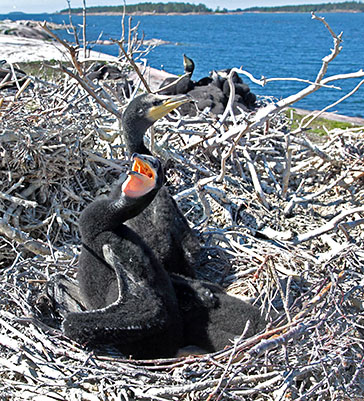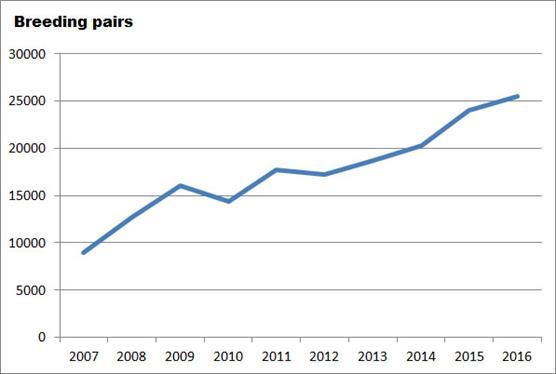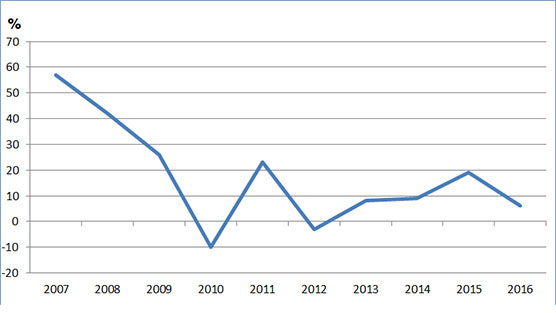Press release 2016-08-01 at 13:54
In the summer of 2016, 25,500 cormorant nests were tallied in Finland. Despite the favourable conditions in the cormorants’ overwintering areas, the population grew by only six percent, i.e. 1,500 nests, from the previous year. The most substantial change in the population was the shift in focus between the Satakunta and Ostrobothnia regions.

Photo Heikki Kotiranta
Of the largest colony in Finland (more than 4,000 nests in summer 2015), which was ousted from Merikarvia in the Satakunta region, the majority moved to nest in Ostrobothnia, primarily in the three one or two year-old colonies in Närpes, Vaasa and Korsholm. In addition to this, a smaller portion settled in Pori, where an older colony had lost more than a thousand nests in recent years when preyed upon by white-tailed eagles. About a thousand new nests appeared in each of the four smallish colonies. All in all, the population in Ostrobothnia nearly tripled in size to 7,150 nests, while the population in Satakunta was almost halved to 3,950 from the previous summer.
In the Gulf of Finland, the population grew by close to 200 nests, but the number declined in the eastern area. A slight decrease in the cormorant population was also observed in the Finnish Archipelago Sea. One-third of the breeding cormorant population was found in the Gulf of Finland, where 8,660 nests were counted. Almost one-fourth of the population (some 5,950 nests) nested in Kvarken. One-fifth of the population (some 5,200 nests) nested in the Finnish Archipelago Sea and Bothnian Sea In the Bay of Bothnia, the population increased to some 500 nests.
More than half of cormorants nest in bird protection areas
The largest cormorant colony in Uusikaupunki declined by one-fourth to 2,010 nests. Compared to the previous summer, nearly twice the number of colonies comprising more than 1,000 nests were found, spanning from Virolahti to Nykarleby. Close to 60 percent of the Finnish cormorant population nested in these colonies.
A total of 49 cormorant colonies were found, located on 81 islets or islands in an area of approximately 65 hectares. One-fourth of the cormorants nested in trees. About ten new smallish colonies were discovered, but the nesting was only successful in four: Kustavi, Kristinestad, Korsholm and Nykarleby.
Of the colonies recorded during the previous summer, roughly ten were found deserted. More than half of the nests were located in bird protection areas. The nesting season was illegally disturbed, at least, in Mynämäki, Vaasa, Korsholm and Nykarleby. More than 600 nests were destroyed.
Cormorant nests 2007–2016

Source SYKE
Cormorant population’s percentage of increase 2007–2016

Source SYKE
The white-tailed eagle hinders cormorant nesting primarily in the south-western sea areas
The white-tailed eagle weakened cormorant reproduction, particularly in south-western sea areas, in all likelihood causing some colonies to be deserted altogether. In many locations, there were sightings of white-tailed eagles preying on cormorant nests, and up to more than ten eagles at a time were sighted in individual colonies in Pargas, Uusikaupunki and Luvia.
Cormorant nests by sea area in 2007–2016
Cormorant breeding colonies in the summer of 2016
Further information
Researcher Pekka Rusanen, Finnish Environment Institute (SYKE),
tel. +358 (0)400 148 691, firstname.lastname@ymparisto.fi
Senior Researcher Markku Mikkola-Roos, Finnish Environment Institute (SYKE)
tel. +358 (0)400 148 685, firstname.lastname@ymparisto.fi
Links